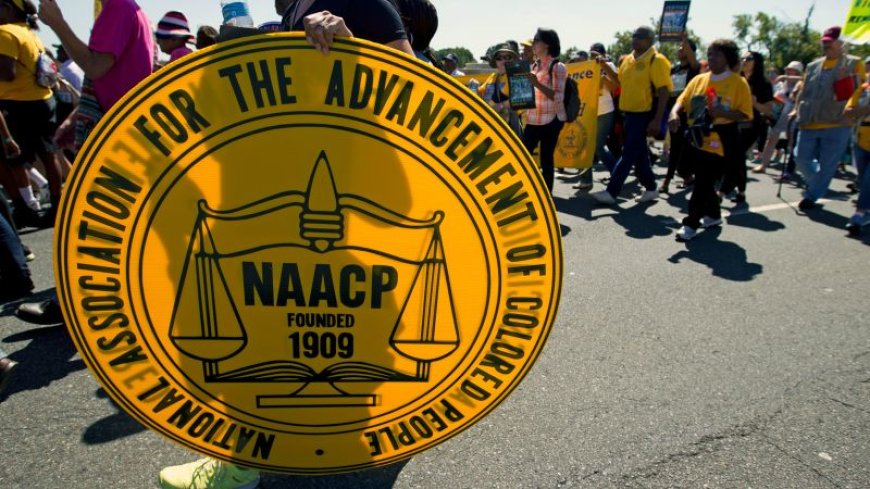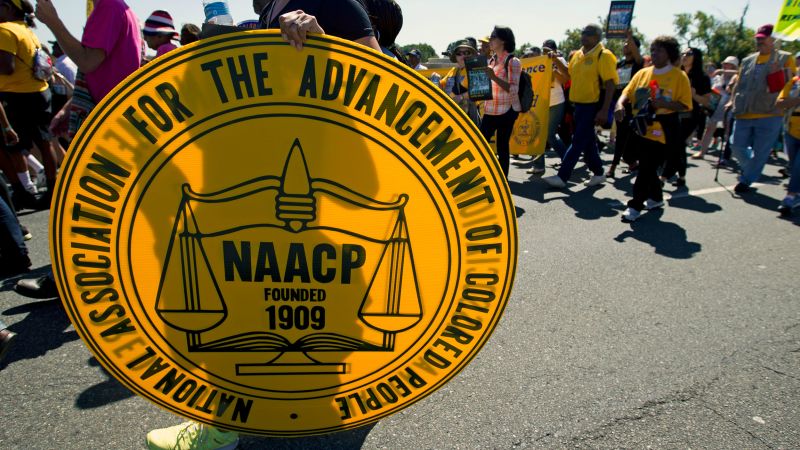Minnesota faces complaint over alleged unfair treatment of Black children and families in its child welfare system | CNN
Minnesota faces complaint over alleged unfair treatment of Black children and families in its child welfare system CNN

The Minneapolis Branch of the NAACP and Children’s Rights File Complaint Against Minnesota for Discrimination in Child Welfare System

CNN
—
Introduction
- The Minneapolis Branch of the NAACP and Children’s Rights, an advocacy group, have filed a complaint with the US Department of Health and Human Services against Minnesota for allegedly discriminating against Black children and families in its child welfare system.
Allegations and Complaint
- Minnesota’s “pattern and practice of utilizing federal funds to discriminatorily surveil and separate Black families, specifically in Hennepin and Ramsey counties, as detailed herein, clearly warrant investigation into the violations of Title VI and its implementing regulations,” the complaint, filed Monday, stated.
- According to the complaint, Minnesota received more than $232 million in federal funding in 2020 for child protections agencies.
- Title VI of the Civil Rights Act of 1964 “provides that no person in the United States shall, on the ground of race, color, or national origin, be excluded from participation in, be denied the benefits of, or be subjected to discrimination under any program or activity receiving federal financial assistance.”
Response and Call for Investigation
- “For far too long, forces within our government have worked to divide, and decimate Black families and communities. Let’s be clear – federal dollars should never be used as tools of discrimination,” NAACP President and CEO Derrick Johnson said in a press release.
- The NAACP and Children’s Rights allege that because the state’s child welfare agency receives federal funds, it is required to treat all families equally and not discriminate.
- “Federally funded child welfare agencies are required under Title VI to provide non-discriminatory services when fulfilling their responsibilities of protecting the children and families they serve,” the complaint states.
Disproportionate Reports and Removals
- The complaint stated that “Between 2019 and 2021, mandated reporters in schools, law enforcement, and social services, made a greater percentage of reports about Black children than white children across Minnesota and in Hennepin and Ramsey counties.”
- Hennepin County is 69.9% White, according to the complaint, but in the last five years, Black children accounted for 53% of the report handled by the Department of Human Services.
- “Black children were the subject of more than 35% of all reports which included neglect as the allegation type, while white children constituted less than 20% of those neglect reports,” the complaint stated.
- In Ramsey County Black children comprised 41% to 46% of the reports made in the last five years, the complaint states, despite the county being 63.6% White, and “white children make up less than 35% of all reports” in the same years.
- In Minnesota, “cases involving Black children are more likely to result in an investigation or assessment, as well as removal and family separation, than cases involving white children,” the complaint states.
Minnesota’s Response
- When reached by CNN, the Minnesota Department of Human Services said the department is “working to strengthen the child protection system and address disparities” working alongside the local community. “We are committed to building on the strengths of communities and providing supports for families so they can raise children in safe, healthy, nurturing environments,” the Minnesota DHS statement said.
- Addressing the specific complaint filed against the state, Minnesota’s DHS told CNN in a statement “We are reviewing the complaint submitted to the U.S. Department of Health and Human Services Office for Civil Rights. Out of respect to the possible investigation into this complaint, we are declining to comment further at this time.”
Call for Investigation and Remedies
- “We placed the state of Minnesota on notice that we’re watching,” Johnson told CNN. He said it’s now up to HHS Office of Civil Rights to conduct a thorough investigation.
- “The next step is to see how widespread it is, and what remedies should be put in place to protect the children and families from such harsh usage of federal dollars,” Johnson said.
- Shereen White, Director of Advocacy and Policy at Children’s Rights said it’s time to end child separations based solely on the color of one’s skin.
- “The nation has failed children. Every 2.5 minutes, a child in the U.S. is separated from their family and placed in the foster system, most often for reasons related to the color of their skin or the poverty they experience – not because they are hurting their kids,” White said in the release.
- “The discriminatory use of ‘emergency removals’ and implementation of safety assessment tools is devastating Black families in Minnesota,” White added.
CNN has also reached out to the US Department of Health and Human Services.
SDGs, Targets, and Indicators Analysis
1. Which SDGs are addressed or connected to the issues highlighted in the article?
- SDG 10: Reduced Inequalities
- SDG 16: Peace, Justice, and Strong Institutions
The issues highlighted in the article are connected to SDG 10 and SDG 16. SDG 10 aims to reduce inequalities within and among countries, while SDG 16 focuses on promoting peaceful and inclusive societies for sustainable development, providing access to justice for all, and building effective, accountable, and inclusive institutions at all levels.
2. What specific targets under those SDGs can be identified based on the article’s content?
- Target 10.2: By 2030, empower and promote the social, economic, and political inclusion of all, irrespective of age, sex, disability, race, ethnicity, origin, religion, or economic or other status.
- Target 16.3: Promote the rule of law at the national and international levels and ensure equal access to justice for all.
The article highlights the alleged discrimination against Black children and families in Minnesota’s child welfare system. This relates to Target 10.2 of SDG 10, which aims to promote the social, economic, and political inclusion of all individuals, regardless of their race or ethnicity. Additionally, the complaint filed against Minnesota raises concerns about violations of Title VI of the Civil Rights Act of 1964, which prohibits discrimination based on race or color. This connects to Target 16.3 of SDG 16, which focuses on promoting the rule of law and ensuring equal access to justice for all.
3. Are there any indicators mentioned or implied in the article that can be used to measure progress towards the identified targets?
- Indicator for Target 10.2: Proportion of the population reporting having personally felt discriminated against or harassed in the previous 12 months on the basis of a ground of discrimination prohibited under international human rights law.
- Indicator for Target 16.3: Proportion of victims of violence in the previous 12 months who reported their victimization to competent authorities or other officially recognized conflict resolution mechanisms.
The article mentions several indicators that can be used to measure progress towards the identified targets. The first indicator relates to Target 10.2 and involves measuring the proportion of the population reporting personal experiences of discrimination or harassment based on prohibited grounds. The second indicator relates to Target 16.3 and focuses on measuring the proportion of victims of violence who report their victimization to competent authorities or conflict resolution mechanisms.
Table: SDGs, Targets, and Indicators
| SDGs | Targets | Indicators |
|---|---|---|
| SDG 10: Reduced Inequalities | Target 10.2: By 2030, empower and promote the social, economic, and political inclusion of all, irrespective of age, sex, disability, race, ethnicity, origin, religion, or economic or other status. | Proportion of the population reporting having personally felt discriminated against or harassed in the previous 12 months on the basis of a ground of discrimination prohibited under international human rights law. |
| SDG 16: Peace, Justice, and Strong Institutions | Target 16.3: Promote the rule of law at the national and international levels and ensure equal access to justice for all. | Proportion of victims of violence in the previous 12 months who reported their victimization to competent authorities or other officially recognized conflict resolution mechanisms. |
Behold! This splendid article springs forth from the wellspring of knowledge, shaped by a wondrous proprietary AI technology that delved into a vast ocean of data, illuminating the path towards the Sustainable Development Goals. Remember that all rights are reserved by SDG Investors LLC, empowering us to champion progress together.
Source: cnn.com

Join us, as fellow seekers of change, on a transformative journey at https://sdgtalks.ai/welcome, where you can become a member and actively contribute to shaping a brighter future.







